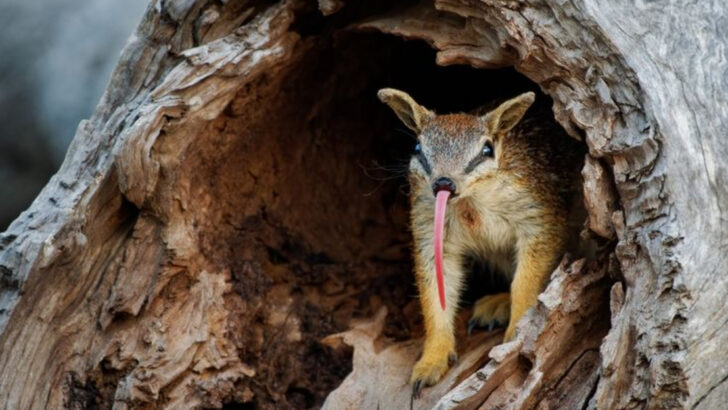You’ve probably never met a pickier eater. The numbat dines on termites—and only termites—chomping through up to 20,000 of them every single day with a tongue that’s longer than its head. And while most marsupials snooze through daylight, the numbat struts around in the sun like it owns the outback. It doesn’t even have a pouch, yet still manages to carry its babies like a champ—no pockets necessary. With tiger stripes on its back, a tail like a feather duster, and a survival story that’s teetered on extinction, this tiny mammal is one of Australia’s most bizarre—and lovable—creatures. Ready to meet the termite-hunting hero you didn’t know you needed? Let’s dive into the wild world of the numbat.
The Termite Feast
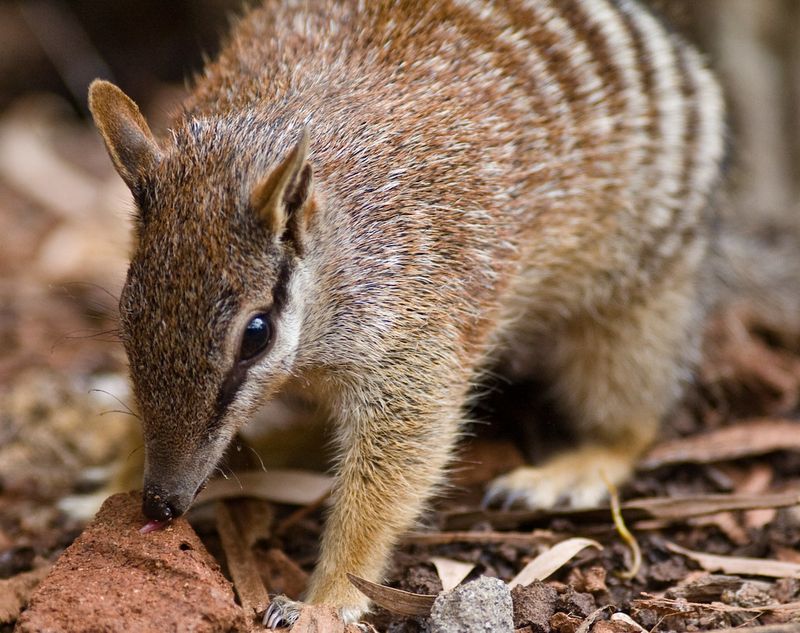
The numbat’s diet consists almost solely of termites, consuming up to 20,000 a day. With its extraordinary sticky tongue, it captures these tiny insects with remarkable precision, almost as if engaging in a daily feast. This behavior is not just a survival mechanism but a spectacle of nature’s ingenuity. This unique dietary preference underscores its critical role in maintaining the ecological balance by keeping termite populations in check.
Daytime Marsupial
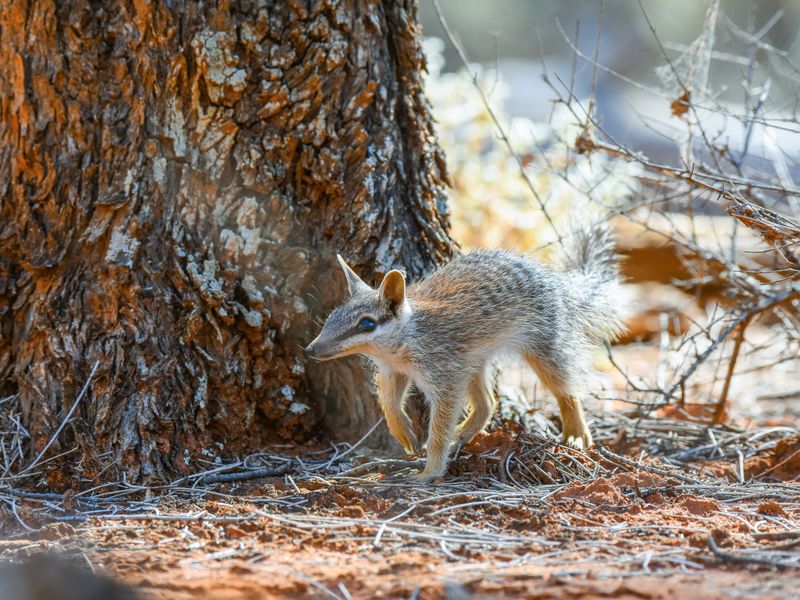
Unlike many of its nocturnal marsupial relatives, the numbat bucks the trend by being diurnal. Its daytime activities revolve around hunting termites under the warming sun. This rare trait sets it apart, providing a glimpse into its adaptive strategies. Embracing the daylight hours, the numbat showcases its resourcefulness in a world where night creatures often dominate.
No Pouch, No Problem
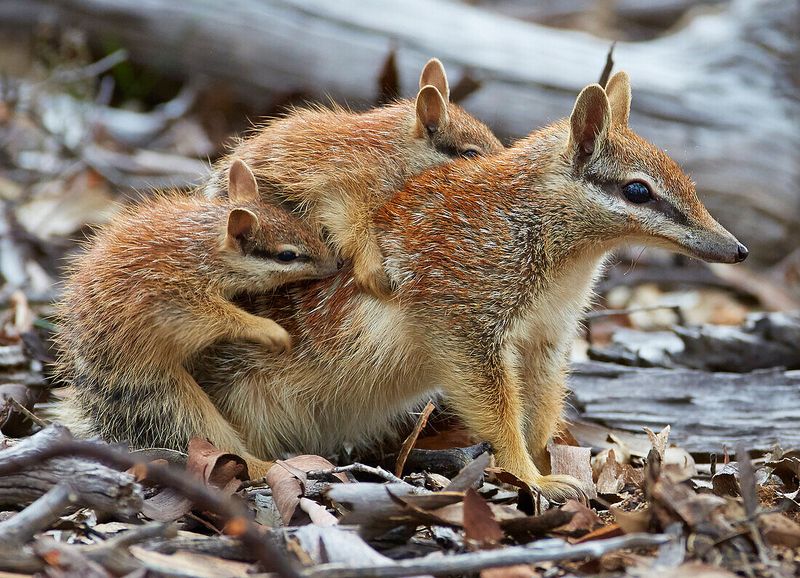
Though lacking a pouch, the numbat ingeniously nurtures its young by letting them cling to teats on her belly. This adaptation ensures that her offspring are safely transported as she moves through her habitat. The absence of a pouch doesn’t hinder her maternal instincts; instead, she embodies resilience, providing a mobile sanctuary for her vulnerable young. This method of care highlights the numbat’s unique approach to motherhood.
The Tongue’s Reach
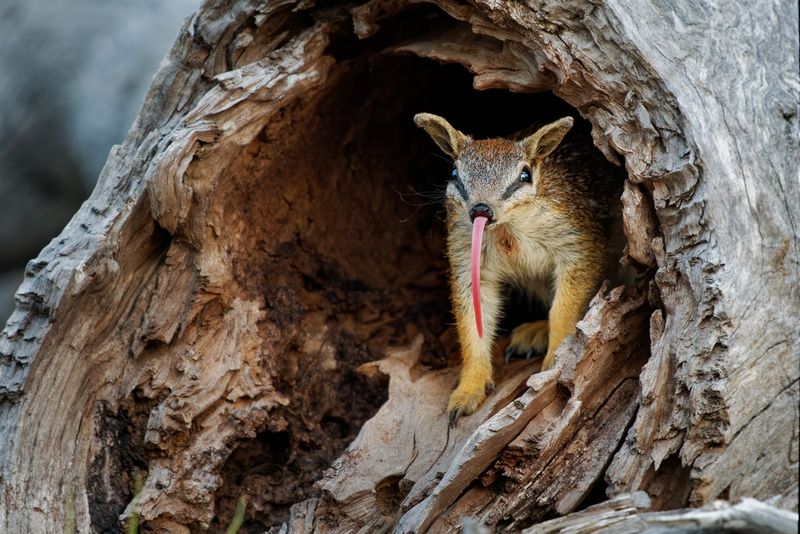
The numbat’s tongue is a marvel in itself, extending over 10 centimeters and surpassing the length of its head. This extraordinary adaptation is perfectly suited for exploring termite tunnels, capturing prey with finesse. Such a feature is a testament to evolutionary innovation, equipping the numbat with the tools to thrive in its environment. Its tongue is not just a feeding apparatus but a symbol of specialization.
The Scent of Termites
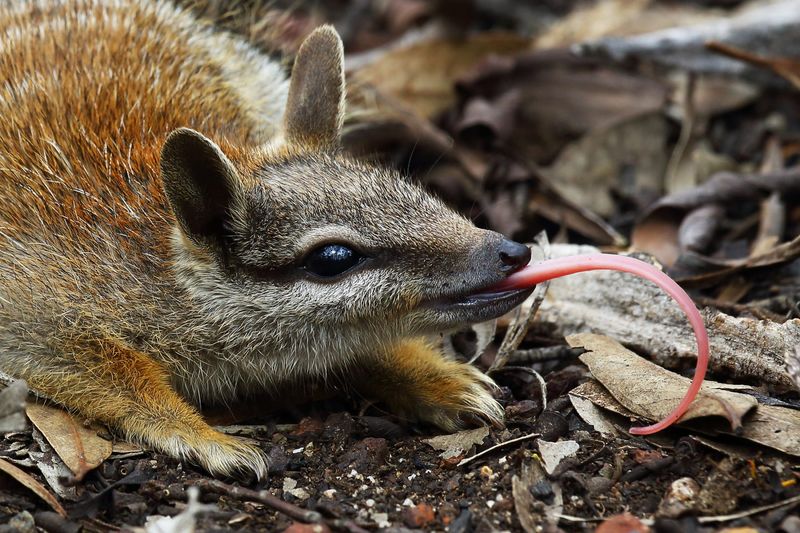
With a keen sense of smell, the numbat compensates for its poor eyesight by detecting termites underground. This reliance on olfactory cues is a fascinating aspect of its hunting strategy. By honing in on the scent of its prey, the numbat navigates its world with a finely tuned efficiency. This sensory prowess illustrates the delicate balance of adaptations that enable its survival in the wild.
Symbol Without Presence
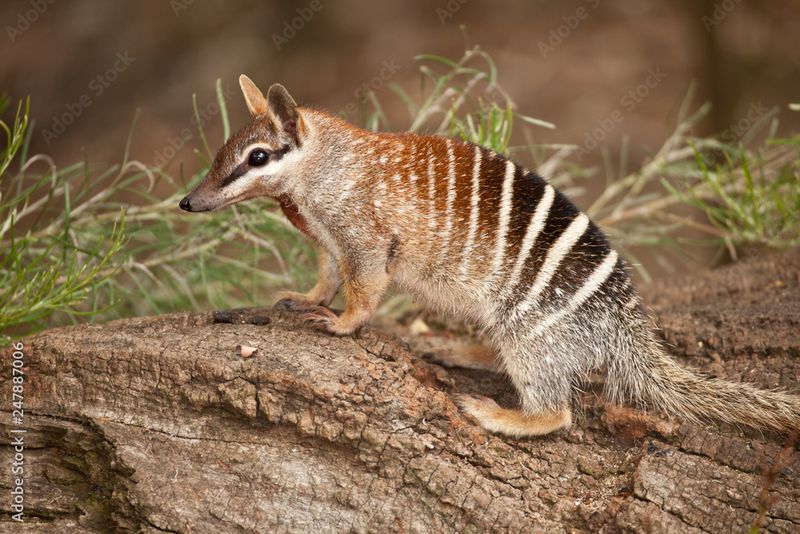
Although the numbat is the faunal emblem of Western Australia, it no longer roams the vast territories it once did, including Tasmania. This symbolic status speaks to its cultural significance, even as its natural range has dwindled. The numbat’s absence in Tasmania offers a poignant reminder of the challenges faced by native wildlife. Its emblematic representation is both an honor and a call to action for conservation.
Termite-Only Diet
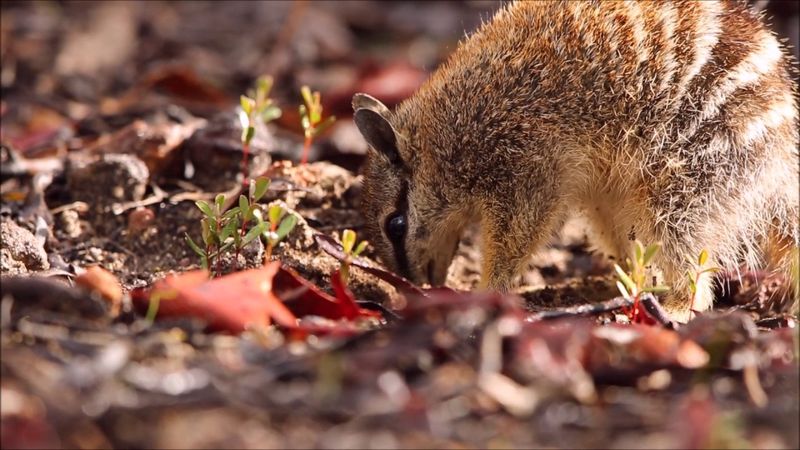
The numbat is a dietary specialist, consuming almost exclusively termites and showing little interest in other insects. Its diet is a testament to its evolutionary path and ecological niche. By focusing on termites, the numbat plays a crucial role in controlling their populations. This singular focus on one food source highlights the delicate balance of its ecological interactions.
Striped Camouflage
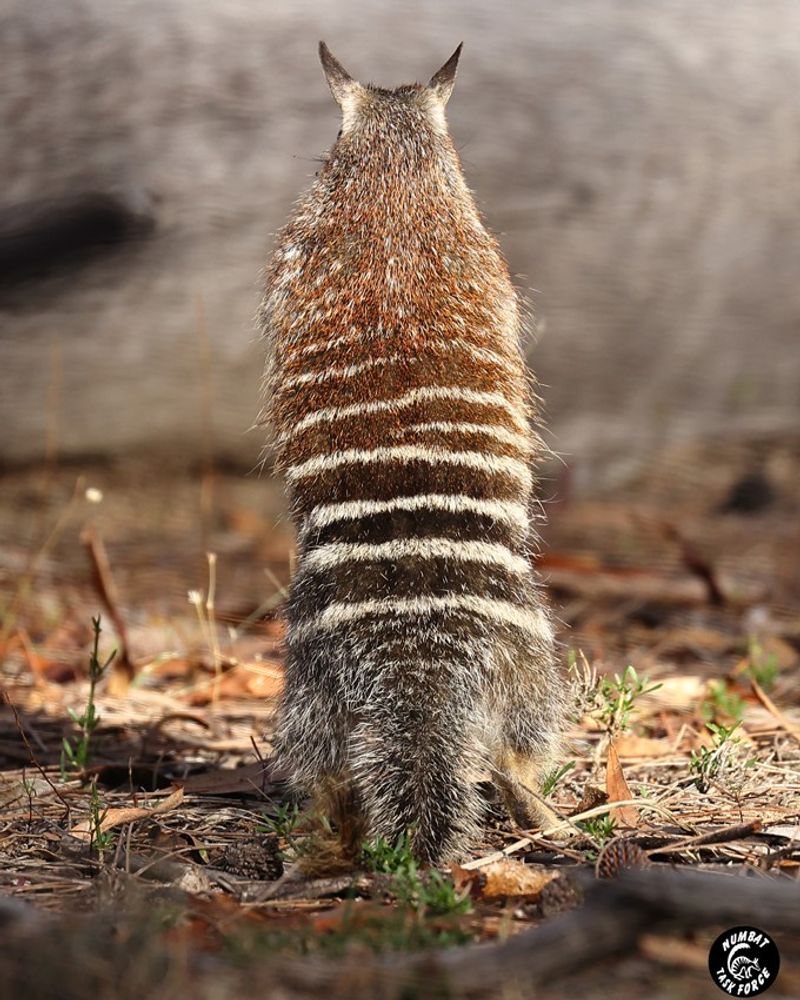
With a striking rusty-red coat and white stripes, the numbat’s appearance is both beautiful and functional. These markings serve as camouflage, helping it blend seamlessly with its woodland environment. The numbat’s stripes offer a clever disguise, allowing it to move unnoticed through fallen logs and undergrowth. Its natural attire is a defensive strategy, showcasing nature’s artistry in survival techniques.
Critically Endangered
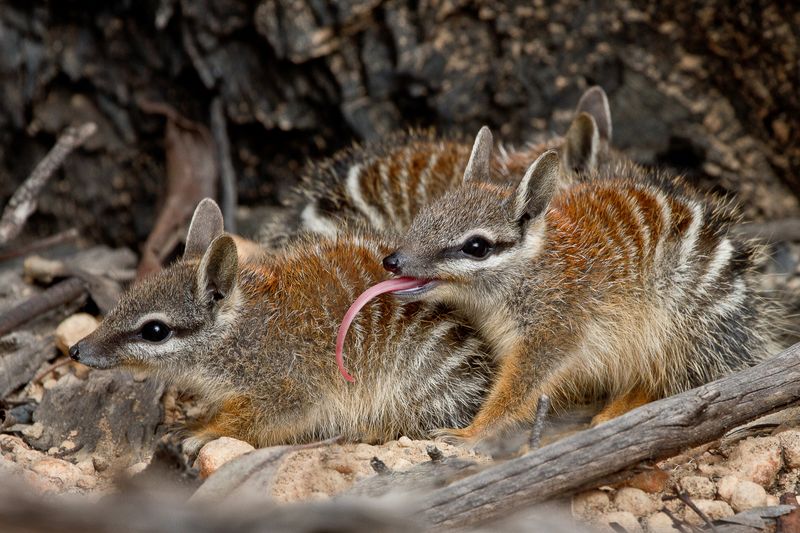
The numbat faces grave threats from habitat loss and predators, making it critically endangered. With fewer than 1,000 individuals left in the wild, it stands on the brink of extinction. This precarious situation calls for urgent conservation efforts. The numbat’s plight is a stark illustration of the challenges facing biodiversity today. Protecting this unique marsupial is not just an ecological urgency but a moral imperative.
Tail as a Disguise
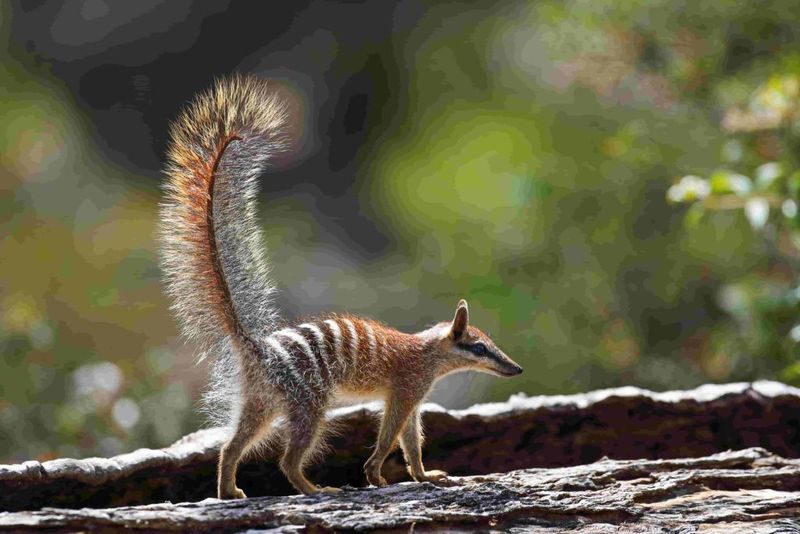
The numbat’s bushy tail serves a dual purpose, acting as both a balance aid and a camouflage tool. When feeding, the numbat raises its tail high, mimicking a clump of dry grass, effectively hiding from predators. This clever adaptation adds another layer of protection, showcasing its strategic approach to survival. The tail’s role in disguise exemplifies the numbat’s ingenuity in the wild.

